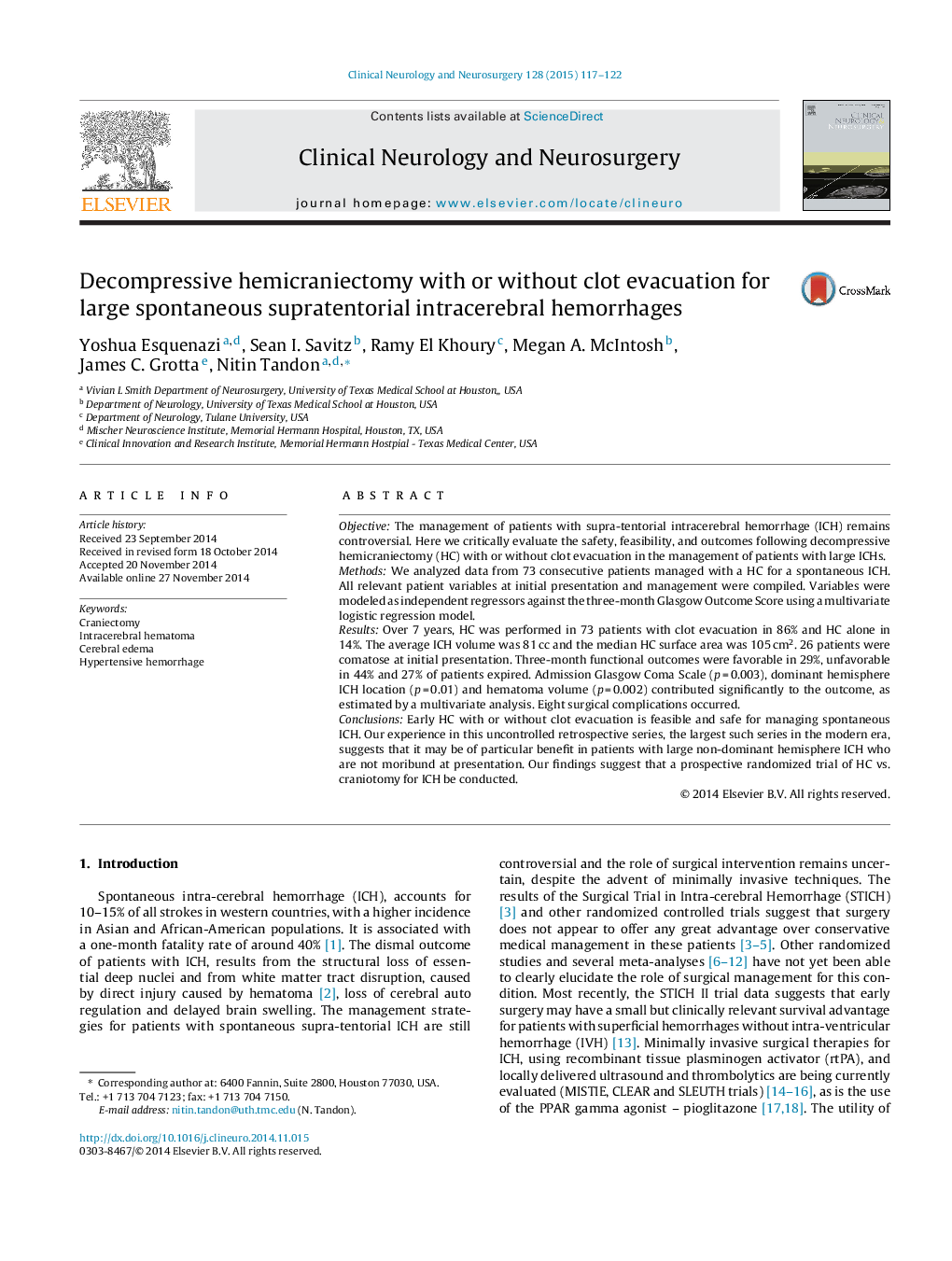| Article ID | Journal | Published Year | Pages | File Type |
|---|---|---|---|---|
| 3040141 | Clinical Neurology and Neurosurgery | 2015 | 6 Pages |
•HC is safe and feasible in the management of ICH.•Admission GCS, ICH location and hematoma volume contribute strongly to the outcome.•HC for ICH may lead to better functional outcomes than would otherwise be anticipated.
ObjectiveThe management of patients with supra-tentorial intracerebral hemorrhage (ICH) remains controversial. Here we critically evaluate the safety, feasibility, and outcomes following decompressive hemicraniectomy (HC) with or without clot evacuation in the management of patients with large ICHs.MethodsWe analyzed data from 73 consecutive patients managed with a HC for a spontaneous ICH. All relevant patient variables at initial presentation and management were compiled. Variables were modeled as independent regressors against the three-month Glasgow Outcome Score using a multivariate logistic regression model.ResultsOver 7 years, HC was performed in 73 patients with clot evacuation in 86% and HC alone in 14%. The average ICH volume was 81 cc and the median HC surface area was 105 cm2. 26 patients were comatose at initial presentation. Three-month functional outcomes were favorable in 29%, unfavorable in 44% and 27% of patients expired. Admission Glasgow Coma Scale (p = 0.003), dominant hemisphere ICH location (p = 0.01) and hematoma volume (p = 0.002) contributed significantly to the outcome, as estimated by a multivariate analysis. Eight surgical complications occurred.ConclusionsEarly HC with or without clot evacuation is feasible and safe for managing spontaneous ICH. Our experience in this uncontrolled retrospective series, the largest such series in the modern era, suggests that it may be of particular benefit in patients with large non-dominant hemisphere ICH who are not moribund at presentation. Our findings suggest that a prospective randomized trial of HC vs. craniotomy for ICH be conducted.
